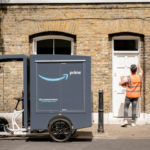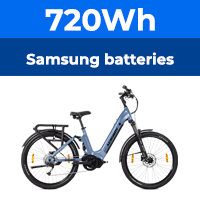Only this gift is solely for the use of Donald Trump, during and even after his presidency.Trump didn't get given any jet. The gift was to the United States
Prices of the electricity we use to charge
- Thread starter flecc
- Start date
crash it insurance job  ill give any one a 747 if you can afford to keep it going.
ill give any one a 747 if you can afford to keep it going.
matt Armstrong does give his rebuilds away even for a 1 quid ticket so then you have a 100k problem most sold them as cant afford to insure it.
most sold them as cant afford to insure it.
and where does all the oil come from to make jet fuel pmsl give it to me ill land it on a dual carriage way might loose a few bits tho
vtol 747 needs more power
matt Armstrong does give his rebuilds away even for a 1 quid ticket so then you have a 100k problem
and where does all the oil come from to make jet fuel pmsl give it to me ill land it on a dual carriage way might loose a few bits tho
vtol 747 needs more power
Energy price change set to cut bills by over £100 a year

 www.bbc.co.uk
www.bbc.co.uk

Energy price cap: Ofgem confirms fall but says fixing could save money
A typical annual domestic energy bill will drop by £129 in July, the first fall in a year.
Malaria researchers at OHSU announce breakthrough that could save untold lives
Researcher cites federal funding, now under threat from the Trump administration, as making ‘every difference’ in their work
"The researchers found that malaria-infected mosquitoes that landed on the surface of materials treated with compounds spearheaded by Riscoe’s team were cured of the parasite after absorbing the compounds through their legs.
Instead of treating humans infected with malaria, in other words, the approach treats the insects carrying the parasite.
And they intend to use bednets — commonly used in the Southern Hemisphere to protect people from being infected with malaria — to do it. "
 www.thelundreport.org
www.thelundreport.org
Researcher cites federal funding, now under threat from the Trump administration, as making ‘every difference’ in their work
"The researchers found that malaria-infected mosquitoes that landed on the surface of materials treated with compounds spearheaded by Riscoe’s team were cured of the parasite after absorbing the compounds through their legs.
Instead of treating humans infected with malaria, in other words, the approach treats the insects carrying the parasite.
And they intend to use bednets — commonly used in the Southern Hemisphere to protect people from being infected with malaria — to do it. "
Malaria researchers at OHSU announce breakthrough that could save untold lives | The Lund Report
Researcher cites federal funding, now under threat from the Trump administration, as making ‘every difference’ in their work
We did the math on AI’s energy footprint. Here’s the story you haven’t heard.
The emissions from individual AI text, image, and video queries seem small—until you add up what the industry isn’t tracking and consider where it’s heading next.

 www.technologyreview.com
www.technologyreview.com
The emissions from individual AI text, image, and video queries seem small—until you add up what the industry isn’t tracking and consider where it’s heading next.

We did the math on AI’s energy footprint. Here’s the story you haven’t heard.
The emissions from individual AI text, image, and video queries seem small—until you add up what the industry isn’t tracking and consider where it’s heading next.
I use AI almost every day, so I do expect that energy consumption of AI in datacenters will grow and grow each year. However, I reckon that AI offsets that energy consumption against lesser use of more power hungry laptops and desktop PCs because you can use AI on your phone instead of going to your laptop or desktop PC. I have a dedicated PC that I have been using to run AI locally. It's hardly in use now because I find it more convenient to go online. Compare the amount of electrity my phone uses against that of my AI PC, 64 cores and tons of memory. That is one or two orders of magnitude in energy savings.We did the math on AI’s energy footprint. Here’s the story you haven’t heard.
The emissions from individual AI text, image, and video queries seem small—until you add up what the industry isn’t tracking and consider where it’s heading next.
Google announced that the number of tokens they process went up 50x in one year. However, in the same year, their Ironwood (TPUv7) offers massive leaps in compute (5x), HBM capacity (6x), and power efficiency (2x) over their 2024 Trillium (v6). Performance is estimated to be within 5% of an Nvidia B200, despite TPUv7’s single primary compute die design. The v7 delivers 4,614 TFLOP/s peak performance. In a few years, virtually everyone on earth is going to use AI daily. It will become as an essential resource as the internet has been.
G
Ghost1951
Guest
"What is truth?"
In John 18:38, Pontious Pilate asked that question, and in a world with an army of fools following every mad utterance of 'Alternative Media', the question has never been more relevant.
But wait: There are facts. There is truth. There are serious journalists and media organisations, and there is a thing called Science, which has done more to tell us the truth and drag us out of misery, sickness and poverty than any other thing in our history.
There are facts:
The moon landings were not fake.
You can transmit data from the moon with a ten watt carrier.
Donald Trump is a habitual liar.
To anybody who isn't completely bonkers, these statements are not controversial. Here is another. To anybody who shouldn't have a carer monitoring their every move, these facts are obvious.
The problem is, about forty percent of the population is of below average intelligence.
This fact is tied up in the definition of what average means.
These people are easy prey to ideologues and unscrupulous charlatans. Snake Oil Salesmen the Americans used to call them.
Some time ago, I met a long lost cousin at a family funeral who started speaking to me about the Ukraine war. My heart sank when she told me she didn't trust the 'legacy media' and had learned a huge amount from 'alternative sources'. Putin she told me was forced to invade Ukraine because NATO were intent on attacking Russia, and Zelenski (a Jew) was really a NAZI. I frowned and walked away to find a saner relative to talk to.
In John 18:38, Pontious Pilate asked that question, and in a world with an army of fools following every mad utterance of 'Alternative Media', the question has never been more relevant.
But wait: There are facts. There is truth. There are serious journalists and media organisations, and there is a thing called Science, which has done more to tell us the truth and drag us out of misery, sickness and poverty than any other thing in our history.
There are facts:
The moon landings were not fake.
You can transmit data from the moon with a ten watt carrier.
Donald Trump is a habitual liar.
To anybody who isn't completely bonkers, these statements are not controversial. Here is another. To anybody who shouldn't have a carer monitoring their every move, these facts are obvious.
The problem is, about forty percent of the population is of below average intelligence.
This fact is tied up in the definition of what average means.
These people are easy prey to ideologues and unscrupulous charlatans. Snake Oil Salesmen the Americans used to call them.
Some time ago, I met a long lost cousin at a family funeral who started speaking to me about the Ukraine war. My heart sank when she told me she didn't trust the 'legacy media' and had learned a huge amount from 'alternative sources'. Putin she told me was forced to invade Ukraine because NATO were intent on attacking Russia, and Zelenski (a Jew) was really a NAZI. I frowned and walked away to find a saner relative to talk to.
G
Ghost1951
Guest
I've been running 12Bn parameter AI models on a mini PC with a Rysen 7, 16 core processor and when idle that machine uses 8 watts and when working on a query it never goes above 28 watts. The duration of the 28 watt request and answer where the machine is working at 28 watts input power might last half a minute, but lets call it a minute, which means solving the query uses about half a watt hour at most.I use AI almost every day, so I do expect that energy consumption of AI in datacenters will grow and grow each year. However, I reckon that AI offsets that energy consumption against lesser use of more power hungry laptops and desktop PCs because you can use AI on your phone instead of going to your laptop or desktop PC. I have a dedicated PC that I have been using to run AI locally. It's hardly in use now because I find it more convenient to go online. Compare the amount of electrity my phone uses against that of my AI PC, 64 cores and tons of memory. That is one or two orders of magnitude in energy savings.
Google announced that the number of tokens they process went up 50x in one year. However, in the same year, their Ironwood (TPUv7) offers massive leaps in compute (5x), HBM capacity (6x), and power efficiency (2x) over their 2024 Trillium (v6). Performance is estimated to be within 5% of an Nvidia B200, despite TPUv7’s single primary compute die design. The v7 delivers 4,614 TFLOP/s peak performance. In a few years, virtually everyone on earth is going to use AI daily. It will become as an essential resource as the internet has been.
I just asked Google AI, how much energy the average query to Chat Gpt uses and it said 2.9 watt hours so my own local system would be certainly less powerful, but about six times more energy efficient - except that I would have to leave the machine running idle at 8 watts an hour. I run it headless, interacting with it on my phone or on my chromebook, so there is no monitor in use on the mini pc, unless I am specifically configuring something on it. I interact with it through OpenWeb UI or a browser extension for chrome and firefox called Page Assist UI.
By the way the words, 'traditional Google search', make the Google quote below a bit disingenuous, because there is no longer a traditional - old time google search. All the googling I do comes up with an AI generated response at the top of the answer. I find this massively useful since I don't generally need to go through screeds of marketing oriented paid for responses in the google listings.
2.9 watt-hours
Each ChatGPT question is estimated to use around 10 times more electricity than a traditional Google search. According to the nonprofit research firm Electric Power Research Institute, a ChatGPT request uses 2.9 watt-hours while traditional Google queries use about 0.3 watt-hours each.
G
Ghost1951
Guest
Do you use Ollama Tony? What models did you run locally?I use AI almost every day, so I do expect that energy consumption of AI in datacenters will grow and grow each year. However, I reckon that AI offsets that energy consumption against lesser use of more power hungry laptops and desktop PCs because you can use AI on your phone instead of going to your laptop or desktop PC. I have a dedicated PC that I have been using to run AI locally. It's hardly in use now because I find it more convenient to go online. Compare the amount of electrity my phone uses against that of my AI PC, 64 cores and tons of memory. That is one or two orders of magnitude in energy savings.
Google announced that the number of tokens they process went up 50x in one year. However, in the same year, their Ironwood (TPUv7) offers massive leaps in compute (5x), HBM capacity (6x), and power efficiency (2x) over their 2024 Trillium (v6). Performance is estimated to be within 5% of an Nvidia B200, despite TPUv7’s single primary compute die design. The v7 delivers 4,614 TFLOP/s peak performance. In a few years, virtually everyone on earth is going to use AI daily. It will become as an essential resource as the internet has been.
I like Gemma 3 12 Bn parameters. I would run the 27Bn model but my mini PC isn't powerful enough. One of my sons runs 27Bn parameter models but the much more powerful gaming PC he runs them on uses a lot more electricity. I was doing it to learn about AI which was useful, rather than for any other reason. It took quite a bit of effort to set it all up, but I suppose one advantage of having the models on your own machine is that in a catastrophe, you would still have a vast fund of knowledge at your disposal and you'd only need solar panel to get it up and running if the sh t hit the fan and everything in civilisation collapsed.
It may seem a but nuts to speculate on Armageddon scenarios, but between a resurgent Russia meddling with power and data cables under the sea - not to say threatening nuclear war, and armies of lunatic teens knocking over major retailers, who knows when power, or data centres could just disappear?
Since Putin invaded Ukraine I have had a six month supply of food at my house in the country. A lot of it in the form of 30 kilo sacks of unground wheat. I have a mill of course. Dull, but I would stay alive for longer.
Last edited by a moderator:
I use Ollama for more than a year but now mostly chatgpt and gemini 2.5 Pro. I use more and more Google products.
So people are more bothered about fake air vents on an Electric car, than how and why people were burnt to unalive in a malfunctioning Electric car? Mm :-/
That's correct vid
GLOBAL BOMBSHELL: Using Advanced AI Algorithms, Renowned Tech Inventor & COVID Expert Steve Kirsch Reveals Incontrovertible Evidence That The COVID-19 mRNA Vaccines Have Caused Mass Death & Illness
Kirsch also responds to the new Senate report & hearings that document how the Biden admin knowingly suppressed evidence that the mRNA gene therapy injections were causing massive health effects & death, particularly in the young.
G
Ghost1951
Guest
Gemma 3 is a google product. I find it more accurate, less prone to hallucinations and it writes far better than many others. Llama is from META, and that isn't bad either, but I think the Google one is better. My son uses Perplexity Deep Research to analyse problems and write complex professional reports. It is a VERY impressive thing, but not as far as I know possible to run on your own local machine. As in all such work, writing the prompt carefully is essential if you want useful output.I use Ollama for more than a year but now mostly chatgpt and gemini 2.5 Pro. I use more and more Google products.
Gemma 3
Gemma 3 is a family of lightweight models capable of multimodal understanding, with unparalleled multilingual capabilities for more intelligent applications
 deepmind.google
deepmind.google
G
Ghost1951
Guest
Yes - of course - nobody ever had a fire before solar flaps were invented. Fire brigades were really staffed by people who were actually unemployed, because fires never happened.One is not even safe in hospital from d Zolar heat, hehe.
Flaps on fire again, flippin hell?

Fire of London 1666. The whole city burned down.

Los Angeles 2024
If I wanted a lot of video, audio, ebook, website misinformation content automatically created by AI about how the earth is square, I'd have to go AMD, or shoehorn some <11GB AI model demon into my nVidia 1080 Ti... but of course it won't be as efficient or run as fast as the newer cards with AI processing enhancements. The time may have come to build an AMD system, I've been exclusively Intel for decades. AMD CPUs used to run too hot and burn out often back then. How much square earth content would it take to snuff out the flat earthers?
Last edited:
Related Articles
-
 MTF Enterprises announces acquisition of EMU Electric Bikes
MTF Enterprises announces acquisition of EMU Electric Bikes- Started by: Pedelecs
-
 Wisper 806T folding bike wins Which? ‘Best Buy’
Wisper 806T folding bike wins Which? ‘Best Buy’- Started by: Pedelecs
-
 Sustrans calls for protected cycle lanes
Sustrans calls for protected cycle lanes- Started by: Pedelecs
-
 Amazon launch their first UK e-cargo micromobility hub
Amazon launch their first UK e-cargo micromobility hub- Started by: Pedelecs



